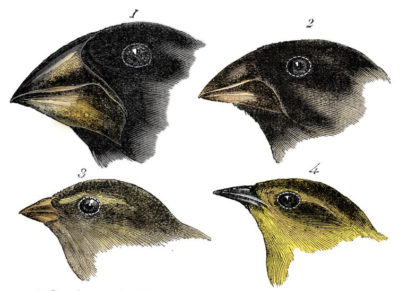 Natural selection is the cornerstone of Charles Darwin‘s theory. The popularity of his new explanation of accounting for life, introduced in 1859, remains high in the twenty-first century. Life, according to NASA, is a chemical system driven by “Darwinian evolution” –
Natural selection is the cornerstone of Charles Darwin‘s theory. The popularity of his new explanation of accounting for life, introduced in 1859, remains high in the twenty-first century. Life, according to NASA, is a chemical system driven by “Darwinian evolution” –
“Life is a self-sustaining chemical system, capable of Darwinian evolution.”
Its popularity blossomed with its ease of understanding once condensed into one phrase: natural selection. As J. Arvid Agren, evolution biologist at Harvard University, in The Gene’s Eye View of Evolution, notes –
“What attracted me to biology was a fascination with the logic of the theory of evolution by natural selection. No other theory explains so much with so little.”
Logical Explanation
 Natural selection logically explains the origin of Earth’s vast biosphere through “innumerable slight, successive” adaptations. However, stories of Darwin formulating his theory while comparing the beaks of finches on the Galapagos Islands, while popular, are misleading.
Natural selection logically explains the origin of Earth’s vast biosphere through “innumerable slight, successive” adaptations. However, stories of Darwin formulating his theory while comparing the beaks of finches on the Galapagos Islands, while popular, are misleading.
Darwin never said he developed the theory during his five-year voyage on the H.M.S. Beagle; another two years would elapse before he worked on a cohesive theory. Reflecting on his voyage experiences, Darwin explained in his diary –
“In July [1837] opened first note Book on ‘Transmutation of Species’— Had been greatly struck from about month of previous March —on the character of S. American fossils—& species on Galapagos Archipelago. These facts origin (especially latter) of all my views.”
Even then, the concept of natural selection was still a year away. While reading An Essay on the Principle of Population, written by Thomas Robert Malthus, an English political economist, Darwin explains his connection with natural selection in his Autobiography –
“In October 1838 … I happened to read for amusement Malthus On Population and being well prepared to appreciate the struggle for existence which everywhere goes on from long-continued observation of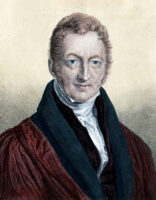 the habits of animals and plants, it at once struck me that under these circumstances, favorable variations would tend to be preserved, and unfavorable ones to be destroyed. The result of this would be the formation of new species. Here, then, I had, at last, got a theory by which to work; but I was so anxious to avoid prejudice that I determined not for some time to write even the briefest sketch of it. In June 1842, I first allowed myself the satisfaction of writing a very brief abstract of my theory in pencil in thirty-five pages.”
the habits of animals and plants, it at once struck me that under these circumstances, favorable variations would tend to be preserved, and unfavorable ones to be destroyed. The result of this would be the formation of new species. Here, then, I had, at last, got a theory by which to work; but I was so anxious to avoid prejudice that I determined not for some time to write even the briefest sketch of it. In June 1842, I first allowed myself the satisfaction of writing a very brief abstract of my theory in pencil in thirty-five pages.”
Inspired by reading Malthus (pictured right) without leaving the British Isles again, Darwin completed a 230-page “brief abstract” six years later in 1842. Writing a letter to his wife, Emma –
“I have just finished my sketch of my species theory. If, as I believe, that my theory is true in time & be accepted by even one competent judge, it will be a considerable step in science.”
While Darwin’s theory delivered a “considerable step,” the step was logical, not scientific.
Rising Popularity
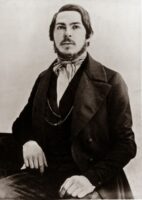 Darwin’s theory resonated throughout the political spectrum. From the socialists, Friedrich Engels (pictured left) wrote in 1883 –
Darwin’s theory resonated throughout the political spectrum. From the socialists, Friedrich Engels (pictured left) wrote in 1883 –
“As Darwin discovered the law of evolution in organic nature, so [Karl] Marx discovered the law of evolution in human history.”
Weighing in on the impact of Darwin, in 1909, eminent American philosopher John Dewey (pictured right) reasoned –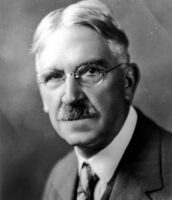
“The greatest dissolvent in contemporary thought of old questions, the greatest precipitant of new methods, new intentions, new problems, is the one affected by the scientific revolution that found its climax in The Origin of Species.”
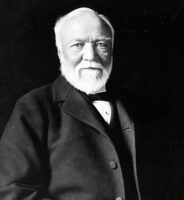 At the turn of the century, steel tycoon Andrew Carnegie (pictured left) commented on the validity of Darwin’s theory –
At the turn of the century, steel tycoon Andrew Carnegie (pictured left) commented on the validity of Darwin’s theory –
“There is no more possibility of defeating the operation of these laws (natural selection) than there is of thwarting the laws of nature which determine the humidity of the atmosphere or the revolution of the Earth upon its axis.”
In the words of America’s legendary late evolutionary biologist Stephen J. Gould (pictured right) of Harvard University –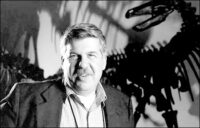
“The essence of Darwinism lies in a single phrase: natural selection is the creative force of evolutionary change.”
Julian Huxley, the grandson of Darwin’s Bulldog (Thomas Huxley), in Evolution, the Modern Synthesis (1948), envisioned natural selection’s “creative force” as –
“Philosophically upside down, with Natural Selection instead of a Divine Artificer as the Deus ex machine.”
Darwin’s Struggles
Darwin struggled with natural selection. After twenty years of work, while writing from his library in the village of Down, entangling natural selection into a maze of inconsistencies, Darwin surprisingly conceded –
“Natural selection … is by far the most serious special difficulty which my theory has encountered.”
Of the 224 terms included in the Glossary of the Principle Scientific Terms in the Origin of Species, the terms natural selection, natural, and selection were not included. Darwin wrote inconsistent definitions of natural selection throughout the book.
Not surprisingly, then, even in the words of Thomas Huxley, best known as “Darwin’s Bulldog,” unlike his grandson, noted –
“[The Origin] is one of the hardest books to understand thoroughly that I know of.”
The popularity of natural selection among nineteenth-century scientists was mixed. In the subsequent editions of The Origin of Species, Darwin addresses the concerns of his contemporary naturalists. While Darwin was awarded the Royal Medal in 1853 for his scientific achievements, the Society never again recognized any of Darwin’s works after the publication of The Origin of Species.
How could modern biology’s most recognized theory emerge from a checkered past?
Louis Pasteur and Gregor Mendel
The popularity of Darwin’s theory grew increasingly marginalized later in the nineteenth century with Louis Pasteur‘s (pictured right) experiments; Pasteur invalidated Darwin’s explanation for the origin of life known as spontaneous generation. And Darwin could not account for a natural mechanism of inheritance to pass on acquired adaptive characteristics.
What rescued Darwinian concepts of natural selection in the early twentieth century emerged through the re-discovery of Gregor Mendel‘s genetic inheritance laws. Natural selection continues as the cornerstone of modern evolutionary biology.
Modern Synthesis Theory
Mendel’s classical genetics led to the development and widespread acceptance of what would become known as the modern synthesis theory by the mid-1940s – also known as Neo-Darwinism. By the mid-1950s, identifying the double helix molecular structure of inheritance brought scientists to the edge of a molecular mechanism to account for evolution.
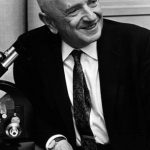 In 1973, Geneticist Theodosius Dobzhansky (pictured left) wrote the legendary “Nothing in Biology Makes Sense Except in the Light of Evolution” essay espousing “evolution propelled by natural selection.”
In 1973, Geneticist Theodosius Dobzhansky (pictured left) wrote the legendary “Nothing in Biology Makes Sense Except in the Light of Evolution” essay espousing “evolution propelled by natural selection.”
The next wake of technological innovations in molecular genetics, beginning in the mid-1970s, launched the genomic revolution, further stretching the limits of Neo-Darwinism.
Scientist’s View
Natural selection remains the central tenet of evolutionary biology, at least philosophically. However, even as most scientific organizations endorse the teaching of evolution, no scientific consensus has been developed on the mechanisms of natural selection in the past 50 years.
Since the mid-twentieth century, the emerging genomic revolution has challenged the fundamentals of Darwin’s vision of natural selection.
 In taking a different approach, Niles Eldredge (pictured right) of Columbia University, a longtime collaborator with Gould and curator of the American Museum of Natural History, views the role of natural selection more cautiously than his one-time colleague Stephen Gould –
In taking a different approach, Niles Eldredge (pictured right) of Columbia University, a longtime collaborator with Gould and curator of the American Museum of Natural History, views the role of natural selection more cautiously than his one-time colleague Stephen Gould –
“In the literal sense of the word, no doubt, natural selection is a false term.”
In What Darwin Got Wrong, Jerry Fodor and Massimo Piattelli-Palmarini deliver a stunning exposé on Dawkins’s assertion that natural selection is an “intentional fallacy.” Seasoned by decades of scientific investigation, Fodor and Piattelli-Palmarini concluded –
“Darwin’s theory of natural selection is fatally flawed.”
Fodor (pictured left) and Piattelli-Palmarini are not lone critics. With over 20 pages of references, the authors demonstrate that the theory of natural selection is no more than circular reasoning: a tautology. Fodor and Piattelli-Palmarini explain –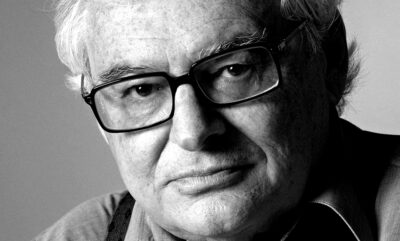
“There is at the heart of adaptations theories of evolution a confusion between (1) the claim that evolution is a process in which creatures with adaptive traits are selected and (2) the claim that evolution is a process in which creatures are selected for their adaptive traits… Darwinism is committed to inferring (2) from (1).
Twenty-first-century critics of natural selection are not in short supply, even among the likes of Richard Dawkins.
“Natural selection works because it is a cumulative one-way street to improvement. It needs some luck to get started, and the ‘billions of planets’ anthropic principle grants it that luck.”
Genomic Revolution
Since the mid-twentieth century, the emerging genomic revolution has challenged the fundamentals of Darwin’s vision of natural selection. Niles Eldredge, the curator of the American Museum of Natural History, developed the acronym V.I.S.T.A. for the museum’s once traveling Darwin Exhibit to explain Darwin’s five principle steps of natural selection: variation, inheritance, selection, time, and adaptation from the emerging genomic perspective.
Five Principles of Natural Selection
The five principles of natural selection driving evolution, variation, inheritance, selection, time, and adaptation, interact in concert. The evidence for natural selection are the “slight successive changes” that leave “innumerable” transitional links between all life forms. As Darwin argued in The Origin of Species –
“By the theory of natural selection, all living species have been connected with the parent-species of each genus, by differences not greater than we see between the natural and domestic varieties of the same species at the present day; and these parent-species, now generally extinct, have in their turn been similarly connected with more ancient forms; and so on backward, always converging to the common ancestor of each great class. So that the number of intermediate and transitional links, between all living and extinct species, must have been inconceivably great. But assuredly, if this theory be true, such have lived upon the earth.”
Therefore, “inconceivably great” evidence of transitional links beginning with a common ancestor is essential to validate his theory. Examining and analyzing natural selection from different perspectives gives insights into the theory’s history, its role in nature and evolution since Darwin introduced the term, and what modern critics of natural selection say.
Darwin’s theory of evolution emerged from a philosophy that was not based on the principles of the scientific method.
Natural Selection, a subcategory of Theory and Consensus, is a site Cornerstone.
More
Natural selection’s five principles, abbreviated as V.I.S.T.A., include –
-
- Variation, First Evolution Principle
- Inheritance
- Selection, Third Principle of Evolution
- Time
- Adaptation, Fifth Principle of Natural Selection – under construction
Approaching the issues surrounding Darwin’s theory of natural selection –
-
- Parallel Natural Selection Theories. How Darwin’s theory of natural selection emerged in the context of other naturalists, specifically Alfred Russel Wallace and Patrick Matthew.
- Tangled Contradictions: How Darwin’s “one long argument” in the six editions over four decades emerged tangled into contradictions.
- Darwin Addresses Objections: How Darwin addresses the disconnect between his theory and the evidence.
- Natural Selection Critics: What evolution scientists have said about the theory of natural selection by name.
- Chronology of Darwin Skeptics: How modern scientists have viewed Darwin’s theory of natural selection chronologically.
Darwin Then and Now is an educational resource on the intersection of evolution and science, highlighting the ongoing challenges to the theory of evolution.
Move On
Explore how to understand twenty-first-century concepts of evolution further using the following links –
-
- The Understanding Evolution category showcases how varying historical study approaches to evolution have led to varying conclusions. Subcategories include –
- Studying Evolution explains how key evolution terms and concepts have changed since the 1958 publication of The Origin of Species.
- What is Science explains Charles Darwin’s approach to science and how modern science approaches can be applied for different investigative purposes.
- Evolution and Science feature study articles on how scientific evidence influences the current understanding of evolution.
- Theory and Consensus feature articles on the historical timelines of the theory and Natural Selection.
- The Biography of Charles Darwin category showcases relevant aspects of his life.
- The Glossary defines terms used in studying the theory of biological evolution.
- The Understanding Evolution category showcases how varying historical study approaches to evolution have led to varying conclusions. Subcategories include –


